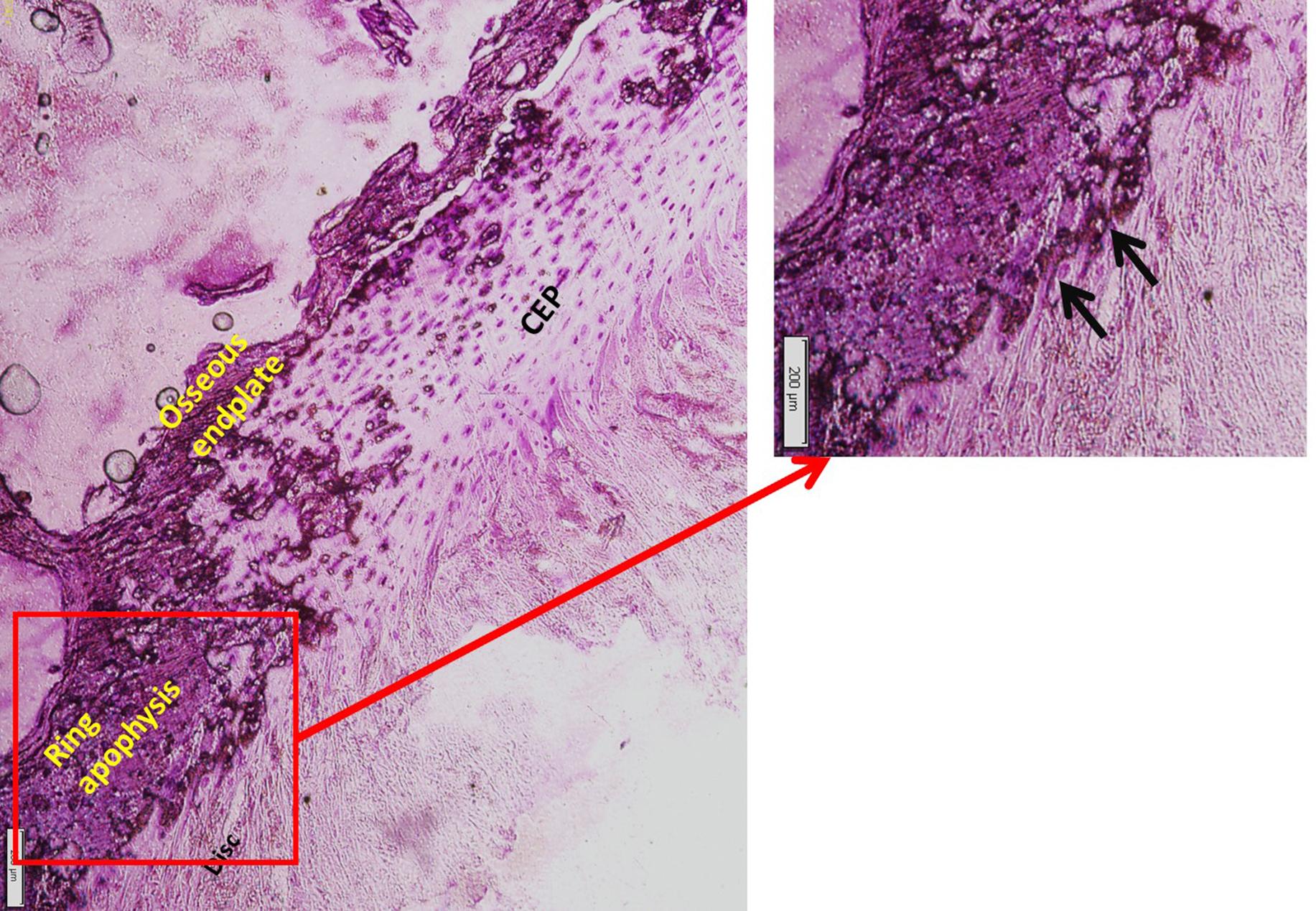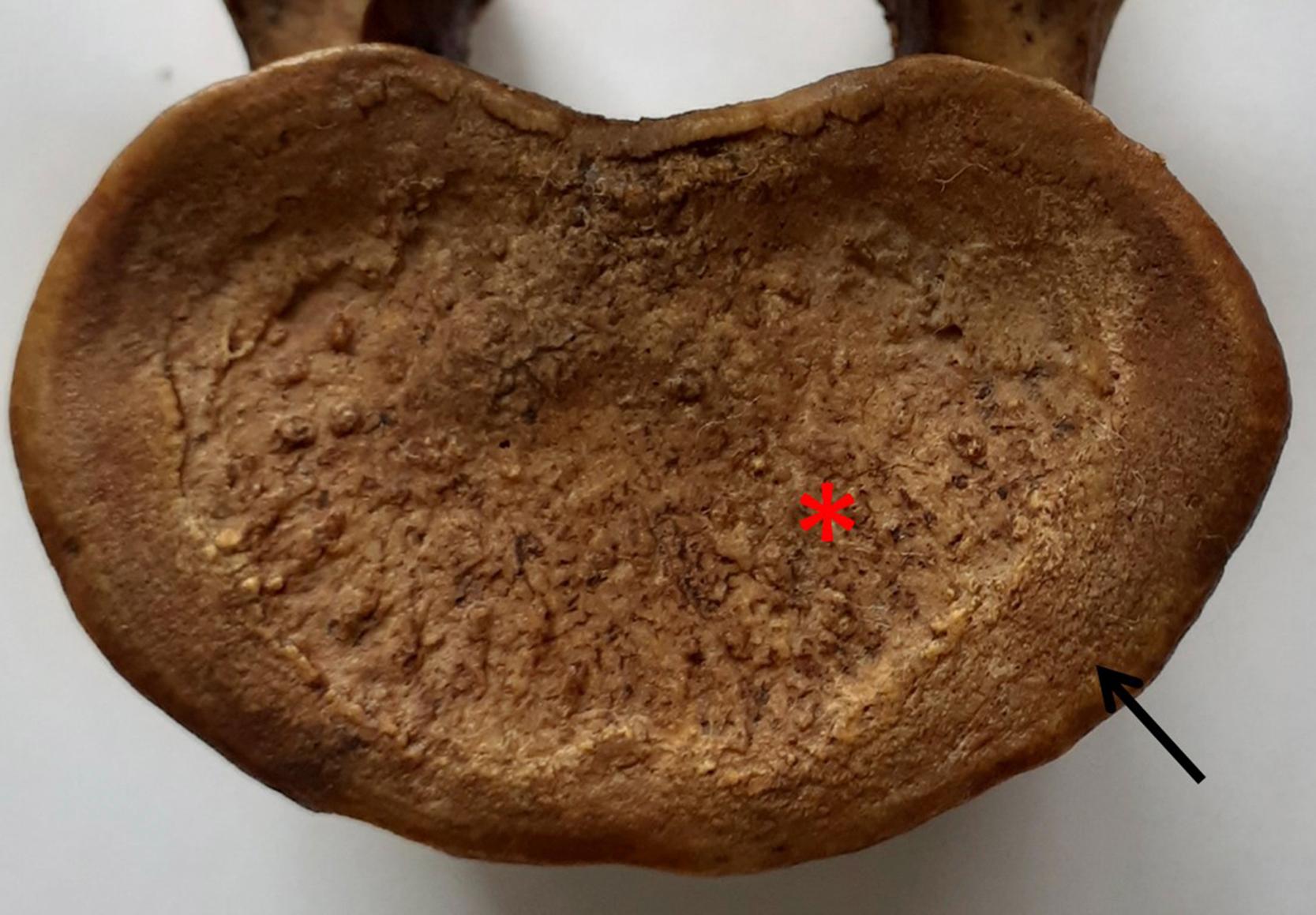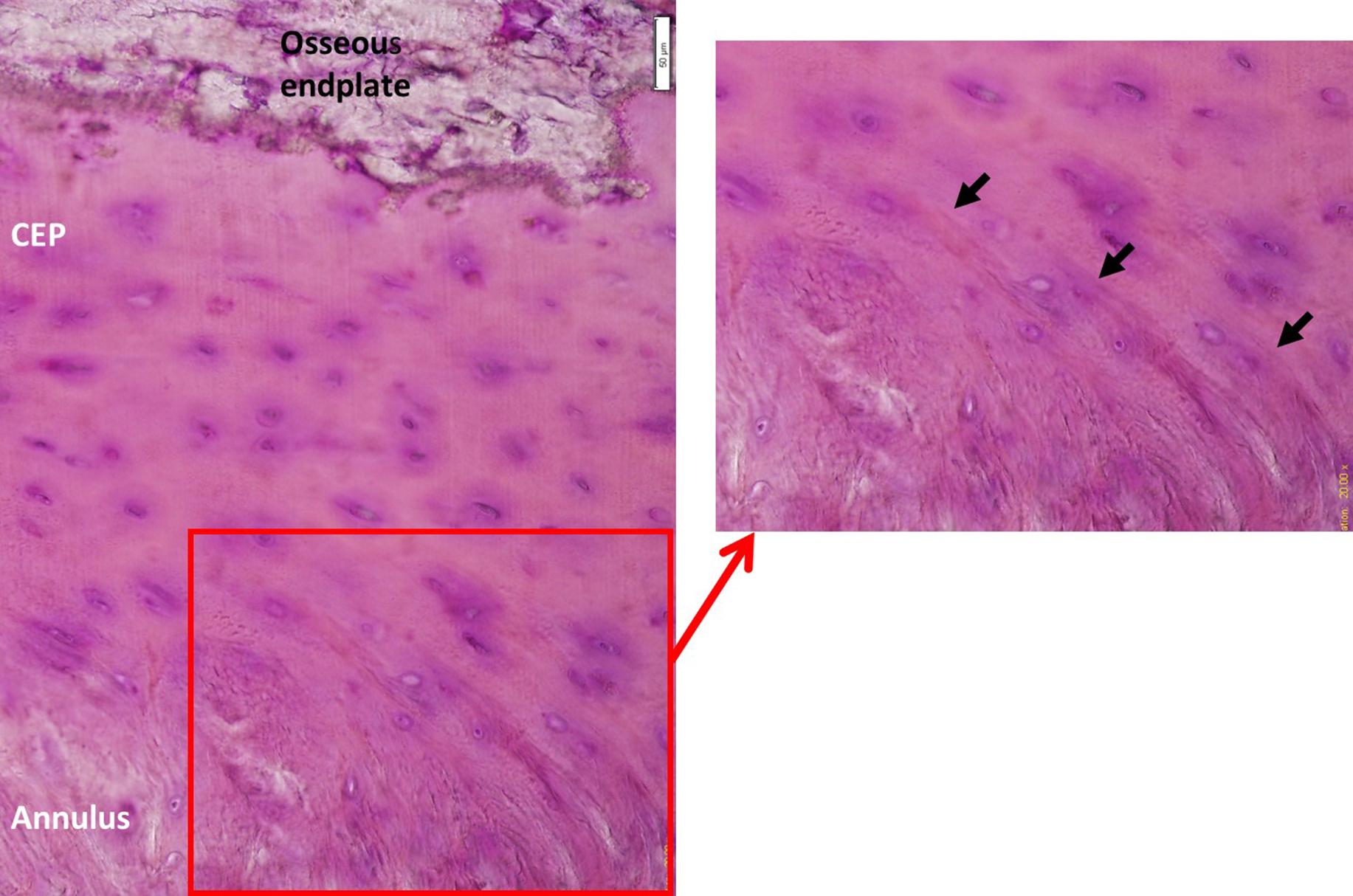Physical Address
304 North Cardinal St.
Dorchester Center, MA 02124
The vertebral endplate is the key regulator of disc nutrient and oxygen transport.
The endplate is composed of an inner bony and an outer cartilaginous layer in relation to the vertebra.
Vertebral endplates are innervated so represent an important, yet often overlooked, potential source of pain.
Endplate pathological change and damage may precede disc degeneration; however, endplate changes may also develop following disc changes and may also promote the development of other clinically relevant imaging phenotypes, such as Modic changes.
A standardized definition of structural endplate abnormalities and defects does not exist but is very much needed to aid our understanding of their role in spine disorders, their relation with other spine phenotypes, and/or the various clinical manifestations of pain/disability as well as treatment outcomes.
The vertebral endplate is a thin layer of tissue interposed between the hard vertebral body and the soft intervertebral disc (IVD) (see Chapter 1 ) [ , ]. The healthy endplate is a composite structure containing both an inner bone and outer cartilaginous layers in relation to the vertebra [ ]. As such, the endplate is the key nutrient transport for the disc, maintains the stress–strain relationship between the disc, prevents the loss of macromolecules, facilitates the structure of the IVD, and is a key pain-generating source. Abnormalities, defects, and/or changes of the endplate can lead to IVD degeneration or be a consequence of it, but more importantly can lead to the development of pain and disability that may necessitate clinical intervention [ ]. Endplate abnormalities/defects/changes have been found to be heritable and at times may be a precursor to the development of IVD degeneration (see Chapter 6 ) and perhaps subchondral bone marrow lesions (i.e., Modic changes) (see Chapter 11 ) that may be contributing to the pain cascade [ , ]. This chapter discusses the pathophysiology of the endplate, mechanisms that may lead to abnormalities/defects/changes and their clinical implications, and the various classification schemes of the structural endplate phenotype of the spine.
From birth until adulthood, the anatomy and composition of the vertebral endplates continually change. Developing from the mesoderm and notochord, the IVDs are positioned between biconvex cartilaginous tissues (see Chapter 1 ). Ossification of the vertebral body takes place during early life. While the outermost rim of the endplate is ossified in young adult spines, the broad central layer remains cartilaginous and is known as the “cartilaginous endplate” (CEP) ( Fig. 10.1 ) [ ]. Ultimately, two zones of the CEP form: the central cartilaginous plate and the peripheral fibrocartilaginous junction with the annulus fibrosus (AF) functioning as an enthesis [ ]. Typical concavity of the endplate starts to appear around the third year of life, almost a year after the establishment of the secondary lumbar curvature in children [ ]. Between the ages of 6 and 8, the epiphyseal cartilage begins to thin, fitting the superior and inferior margins of the vertebral body and consequently serving as a precursor of the annulus/vertebra attachment [ ]. By the age of 12, peripheral ossification centers outside the epiphyseal plate coalesce and form the ring apophysis ( Fig. 10.2 ). Until the ages of 16–21, there remains a layer of hyaline cartilage between the ring apophysis and vertebral body, which contributes to vertebral growth. Thereafter, the ring apophysis begins to fuse to the osseous mass of the vertebral body that signals the cessation of longitudinal growth [ , ].


There are two distinct components of the endplate: bony and cartilaginous. Both components have distinct structural, morphological, and molecular features that are important to the endplate's overall functions. Intradisc zonal variations from the periphery to the center of the endplate, much like those observed in the IVD, and interdisc heterogeneity along the cranial to caudal axis also exist.
The bony component of the endplate is a layer of porous, coalesced trabecular bone that forms the boundary between the CEP and cancellous core of the vertebral body. It contains pockets of vascularized marrow, which touch the surface of, and can penetrate a short depth into the CEP. These pockets facilitate the two-way transport of nutrients and cellular metabolic products between the disc and thin-walled vertebral capillaries [ ].
Throughout the spine, central and peripheral heterogeneity of the bony endplate persists.
Generally, the bony endplate is thinner and more porous centrally and thicker peripherally [ , ]. The thicker peripheral section of the endplate is wider anteriorly than posteriorly [ ], occupying a margin of almost 3–7 mm [ ]. The rim of the bony endplate is regarded as the transitional area and junction of the cartilaginous endplate and AF with the vertebral body ( Fig. 10.2 ) [ ]. This is where the annulus/vertebra interface is formed. The interface is an enthesis composed of a fibrocartilaginous composite. Annular fibers are embedded into a zone of calcified cartilage that is anchored to the subchondral bone via geometric interdigitation [ ]. It is evident through microradiographic studies that the outer AF fibers of the adjacent IVDs penetrate through the calcified layer of cartilage to reach attachment sites in the vertebral body. Furthermore, “fibrillary continuity” exists between the AF and calcified region rather than the AF and bone [ ]. This calcified cartilage is crucial for the load transfer between two mechanically dissimilar materials and is reported to exist across all regions of the vertebral endplate (see Chapter 2 ) [ , ]. This is juxtaposed by the fibers of the inner AF, which form a continuity collagen of the CEP ( Fig. 10.3 ) [ ] and ensures a strong union to provide 360-degree containment of the nucleus pulposus (NP) during compression [ ]. In doing so, the CEP may also provide resistance to tensile, shear, and compressive forces during the complex pattern of loading [ ]. The outermost AF fibers merge with the vertebral periosteum, an attachment that helps the disk resist bending loads ( Fig. 10.1 ) [ ].

Become a Clinical Tree membership for Full access and enjoy Unlimited articles
If you are a member. Log in here